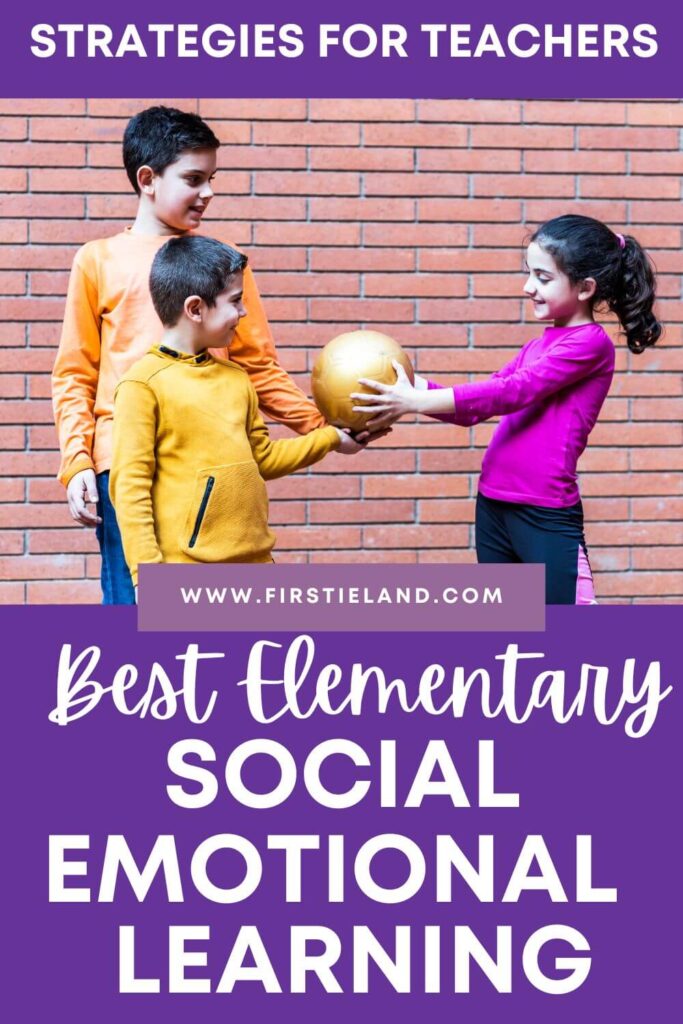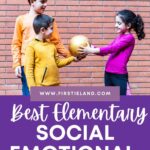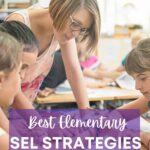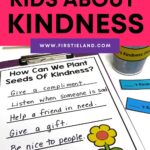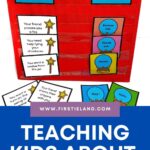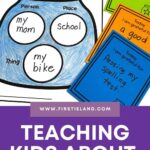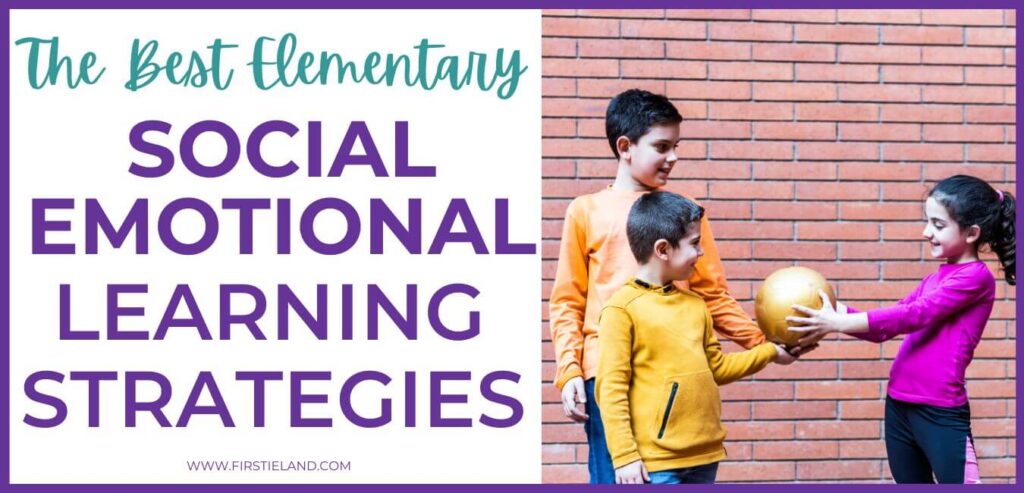
One of teachers biggest concerns in the classroom today is social emotional learning and how to teach SEL skills to young people. Having gone through a pandemic and coming out on the other side, we see the toll it has taken on students' mental health.
Behavior issues are at an all-time high and teachers are struggling to help young children with their emotional needs. How do we help kids regulate their own emotions and build social awareness so that teachers can have a happy and productive classroom? Here are a few SEL strategies for teachers to help you get started.
SEL Strategies For Teachers
The first step is to begin to build positive relationships with your students. This is truly one of the most important SEL strategies for teachers. Building a solid foundation and strong relationships with your students will help you move forward as you begin to teach students social-emotional skills. Take the time to get to know your students. Find out what they like and don't like and use that to your advantage as you plan your lessons.
At the beginning of every school year, I sent a paper home to parents in their child's welcome packet. It simply said, “In a million words or less tell me all the reasons I am going to love your child this school year.” Every parent wants to brag about their child. Every parent thinks that their kid is the best kid in the whole wide world. They look at them in awe and wonder and are so proud of them. Give parents a chance to tell you all the reasons they feel this way. Not only does it make them feel like you care about their child but it's also a great way to learn about the students in your room.
This simple letter told me so many things that I never would have known about the students in my classroom. This is where I learned who was afraid of thunderstorms, who loved to sing and dance, who was shy, and who was outgoing.
I often learned that some children were going through a tough time because maybe their parents were recently divorced or a beloved pet or grandparent had just died. I learned who loved video games, who was allergic to chocolate, and who loved to read. And I learned who might need an extra hug occasionally. So many little details were in those letters and that helped me begin to build supportive relationships with not only my students but parents as well. Those letters also helped me build my SEL curriculum for the year, too.

SEL Curriculum To Promote Positive Behaviors
One thing many teachers have noticed post-pandemic is how students' behaviors have changed in the last few years. Many children do not have the emotional intelligence to regulate their negative emotions. Webster's dictionary defines emotional intelligence as: “the capacity to be aware of, control, and express one's emotions, and to handle interpersonal relationships judiciously and empathetically.”. It's crucial for children to be able to regulate their emotions in order to have success in school and life.
Many children have not been taught how to handle their negative feelings and in fact, may be used to seeing lots of yelling and violence in their own homes. Our school culture may expect children to be well-behaved and to be able to regulate their emotions. But if they have never been taught how to do this you may need to help them.
Captain Kindness And The Behavior Bunch
One fun way to create a positive classroom environment and improve your classroom management is by introducing your students to Captain Kindness and the Behavior Bunch. They are a group of superheroes who live in your classroom and help students make responsible decisions and improve their relationship skills with fun SEL strategies. They teach positive actions and different ways to handle a problem situation. You can introduce The Behavior Bunch superheroes to your students during your morning meeting and reinforce different social skills each day.
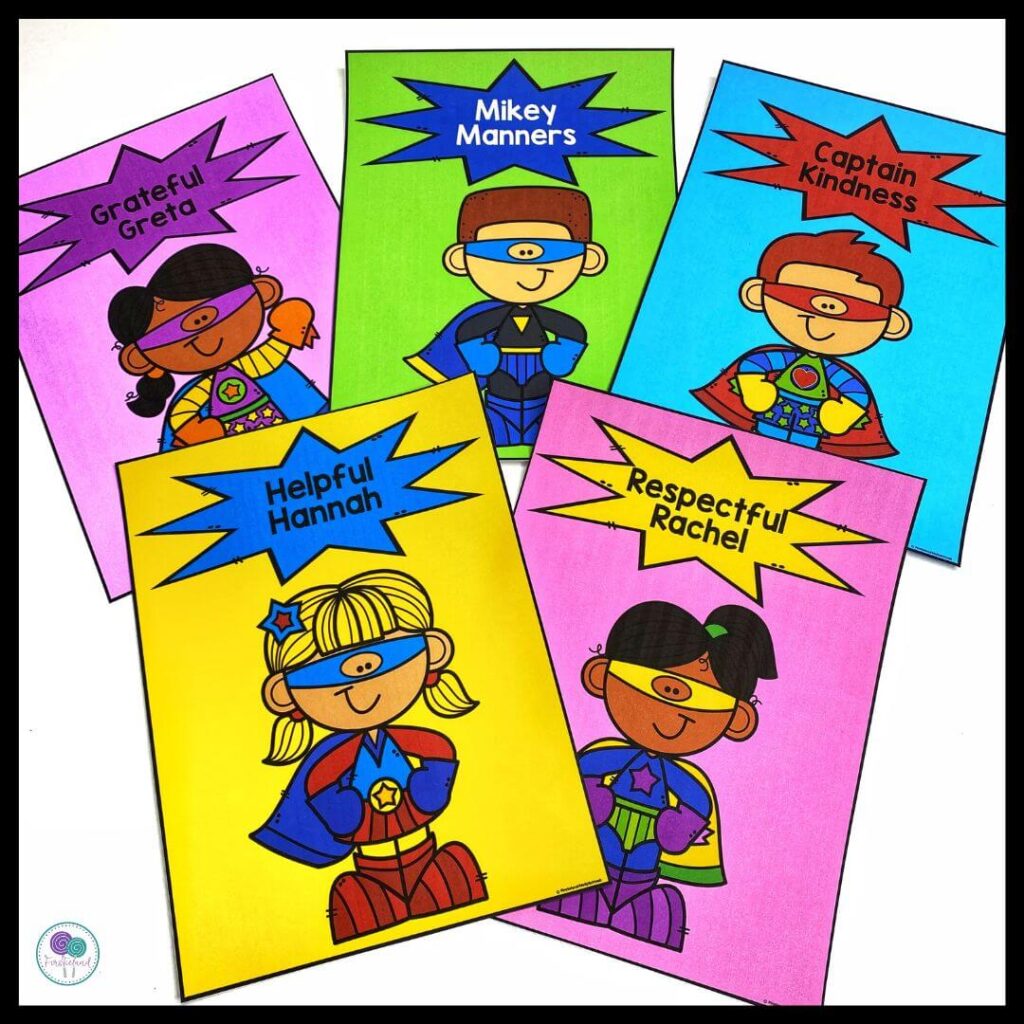
Captain Kindness
Captain Kindness is the leader of the Behavior Bunch. He has a big heart and a shiny cape that flutters in the breeze as he zooms around, spreading joy wherever he goes. With his friendly smile and warm hugs, Captain Kindness shows everyone the power of being kind and how it can make your classroom a better place.
One of the activities we do when we meet Captain Kindness is to read the book Planting Seeds Of Kindness by Rose Bunting.

After reading the story, we worked together to make this anchor chart “How Can We Plant Seeds Of Kindness”. We talked about some of the different ways that we could be kind to our friends and others in our school community. Finally, we planted our own seeds of kindness. We talked about how just as we water the seeds that we have planted, we also have to water our friendships with kind deeds in order to make them grow and flourish as well. Giving students concrete, hands-on examples like this is one of the best ways to reinforce the kind of behaviors you would like to see in your classroom.
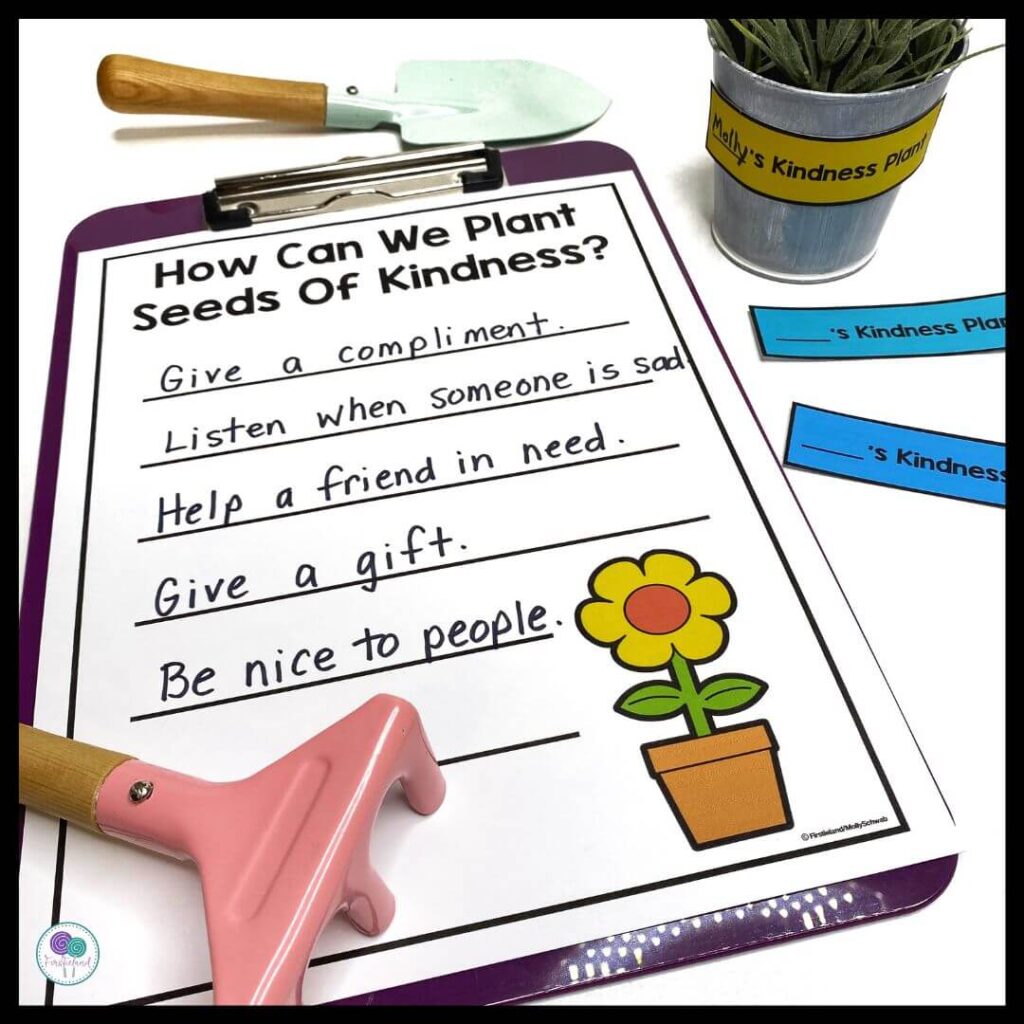
Respectful Rachel
One of Captain Kindness's sidekicks is Respectful Rachel. She teaches students all about how to respect others. Respectful Rachel thinks it's very important to be kind and think about others. Rachel tells kids that they should always be mindful of other people's feelings and give them their space. She also tells them that it's great to appreciate and accept everyone, even if they are different from themselves.
There are a couple of different great books about respect that I love to keep in my classroom library. The Berenstain Bears Please And Thank You Book by Mike Berenstain and I Say Please And Thank You by Robbie Rogge are both great books to help teach students about respect.

After reading one of these books, I introduce my students to the “magic words”. We learn that when we use words like “please”, “thank you”, “May I?” and “Excuse me” we are showing respect for others. It teaches students that using nice words like this can help us go a long way in getting positive outcomes in our life. I show different scenario cards to the students and they choose an appropriate magic word for the situation and how they might respond. This is a great activity to do with your whole group or even in small groups if you have certain children who need to work on this skill more than others.
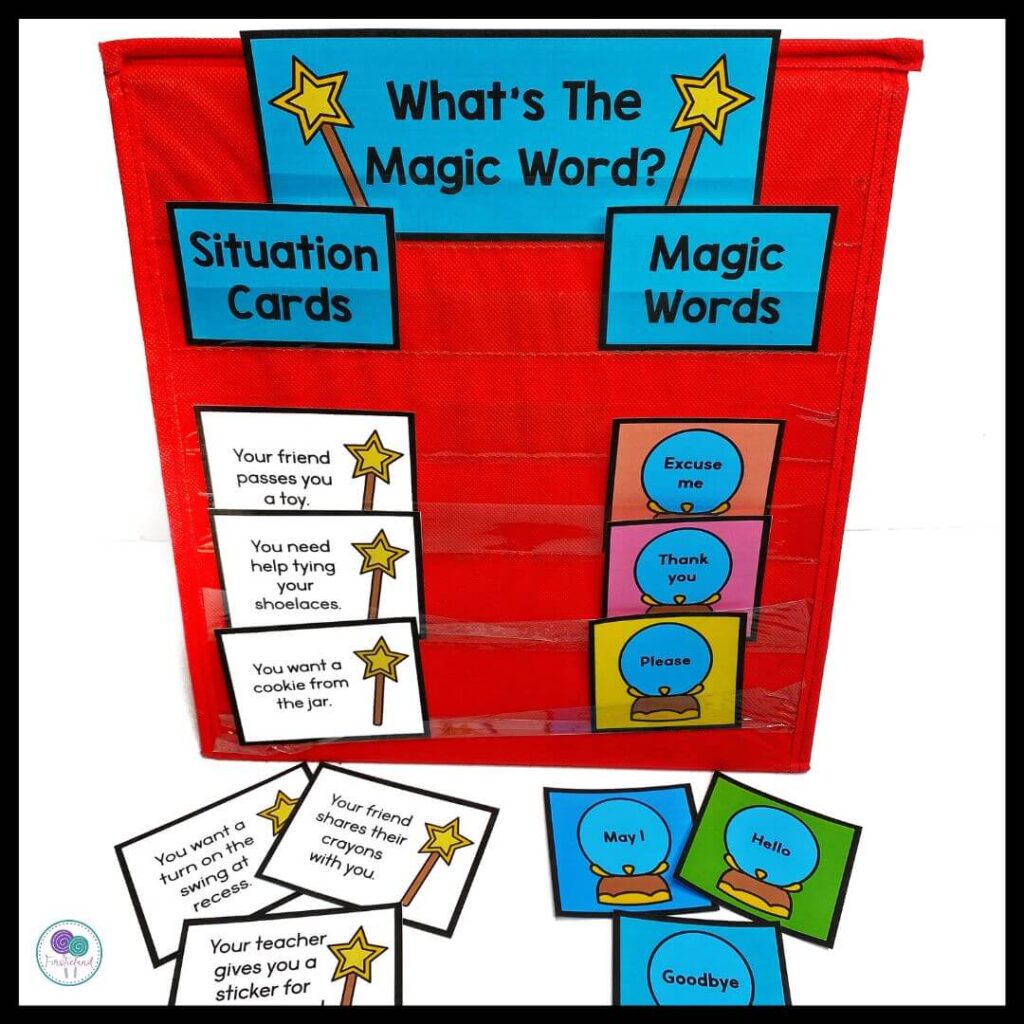
Mikey Manners
Another area where some students struggle on a daily basis is in the cafeteria. There are often lots of negative behaviors that happen in the cafeteria such as throwing food, not sharing the table space, sloppy eating, and just general fooling around. The good news is that Mikey Manners can really help student behavior in the cafeteria!
We start this lesson with the book Table Talk by Julia Cook. This book is great for talking about table manners and how people should act when sitting at a meal together.

After reading the story, we worked together to complete the anchor chart Good and Bad Manners. I prompt students to talk about some of the behaviors we see in the cafeteria. We talk about both the positive things and the negative. We finish up the lesson by playing a fun game in small groups called the Cafeteria Manners game. Kids get to fill their cafeteria trays with food as they read different scenarios and decide if it is good or bad manners for the cafeteria.
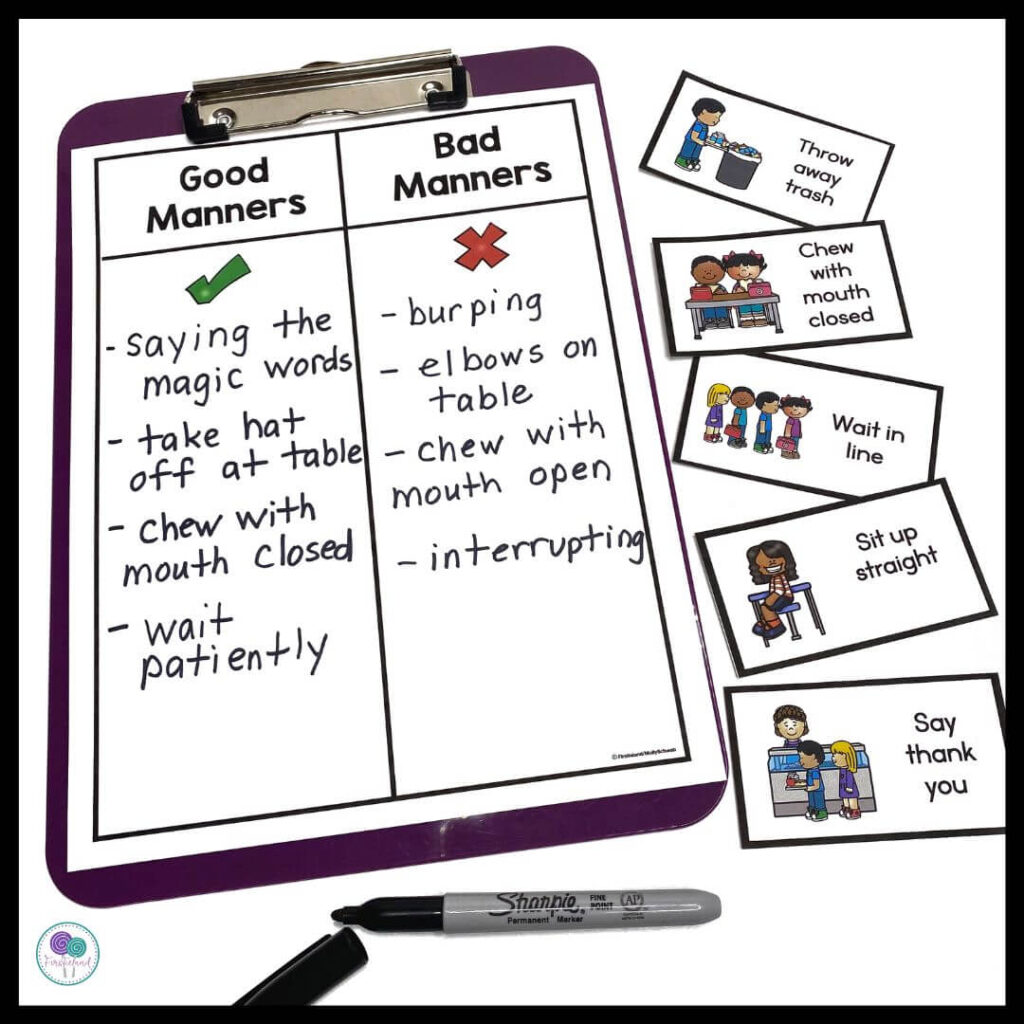
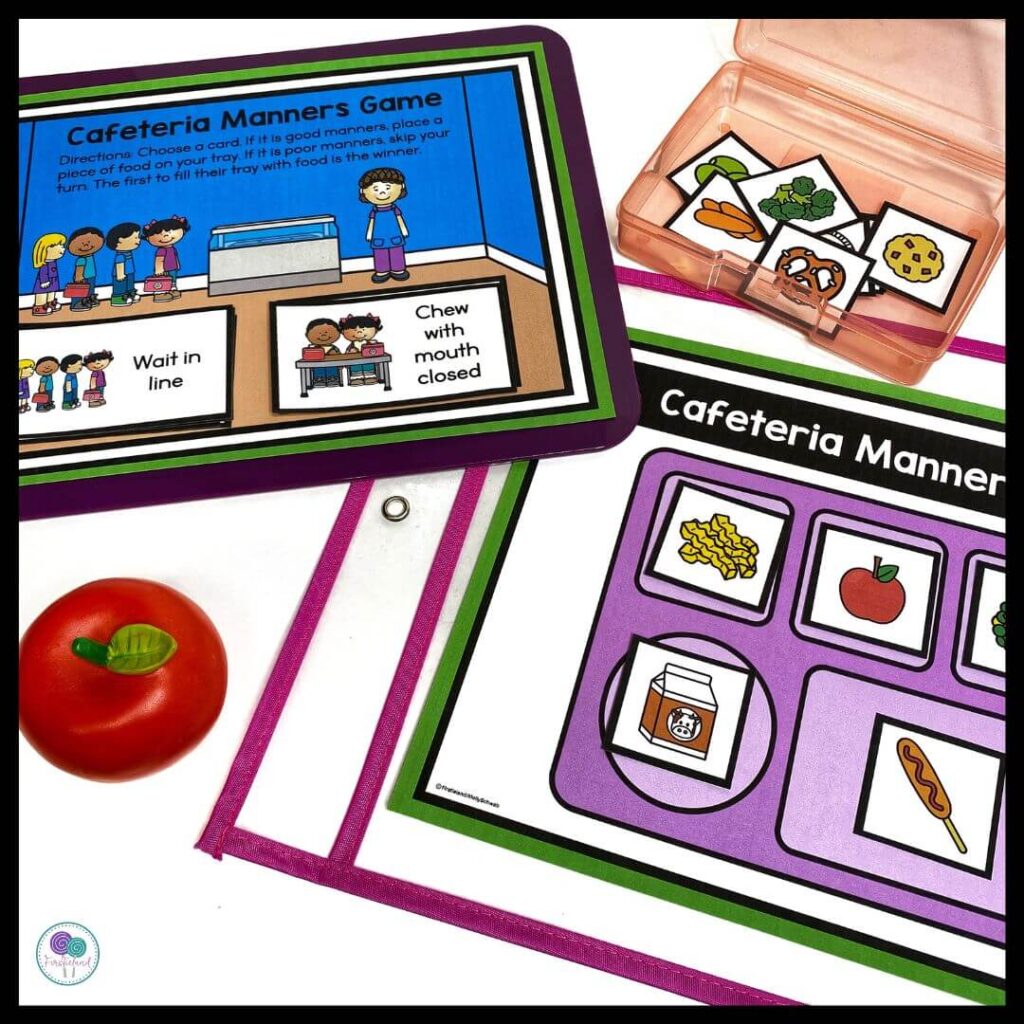
Friendly Frankie
Did you know that children don't always know how to be a good friend? Many young children haven't been taught this social-emotional skill. If they're an only child and live in an area where there aren't many children they may not realize that in order to be a friend you have to talk nicely, share your toys and include everyone in your play. But don't worry because Friendly Frankie from the Behavior Bunch is here to save the day!
This free story of Friendly Frankie teaches students about how to be a good friend. Frankie says that being a friend means being kind and caring. He shows kids how to share their toys and play nicely with others. Frankie tells students to listen to their friends when they talk and to always be there to help them when they need it.

I like to read the book Stick And Stone by Beth Ferry with this lesson. It's a great book that teaches students how to be a friend in a cute and funny way.

We worked together to write some of the different ways that we could be a good friend in our classroom and then the students wrote compliment cards to each other. This is the perfect way to integrate writing into your sel lesson plans.
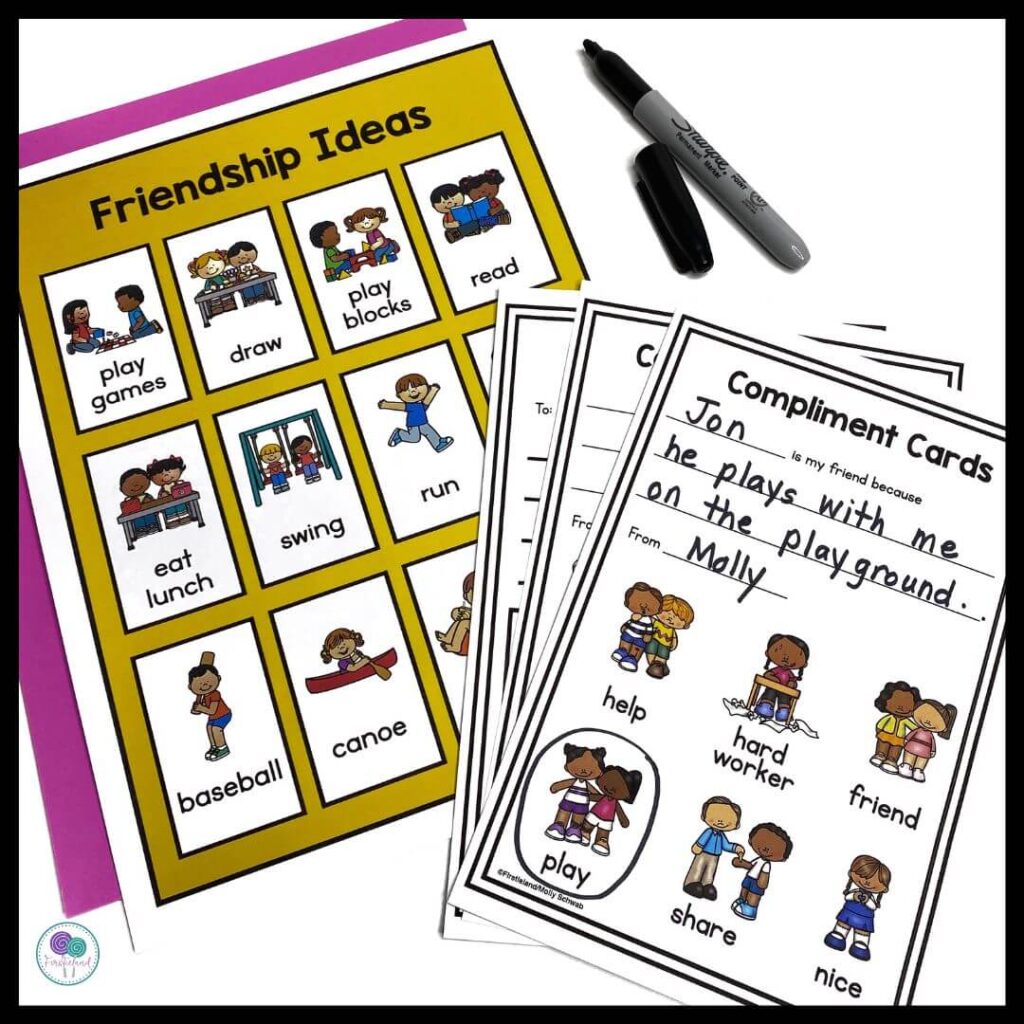
Helpful Hannah
One area of social-emotional development to work on in the classroom is how to be helpful to others. I like to read the book I Choose To Be A Helper by Elizabeth Estrada and then introduce students to our next behavior bunch superhero.

Helpful Hannah teaches students the importance of being helpful to others. She shows them how to lend a hand when someone needs it, like helping to clean up or carrying something heavy.
We use this anchor chart to write a few ways that we can be helpful in the classroom and then the kids work in pairs to play the Helping Game. It's a fun way to reinforce this social-emotional skill.
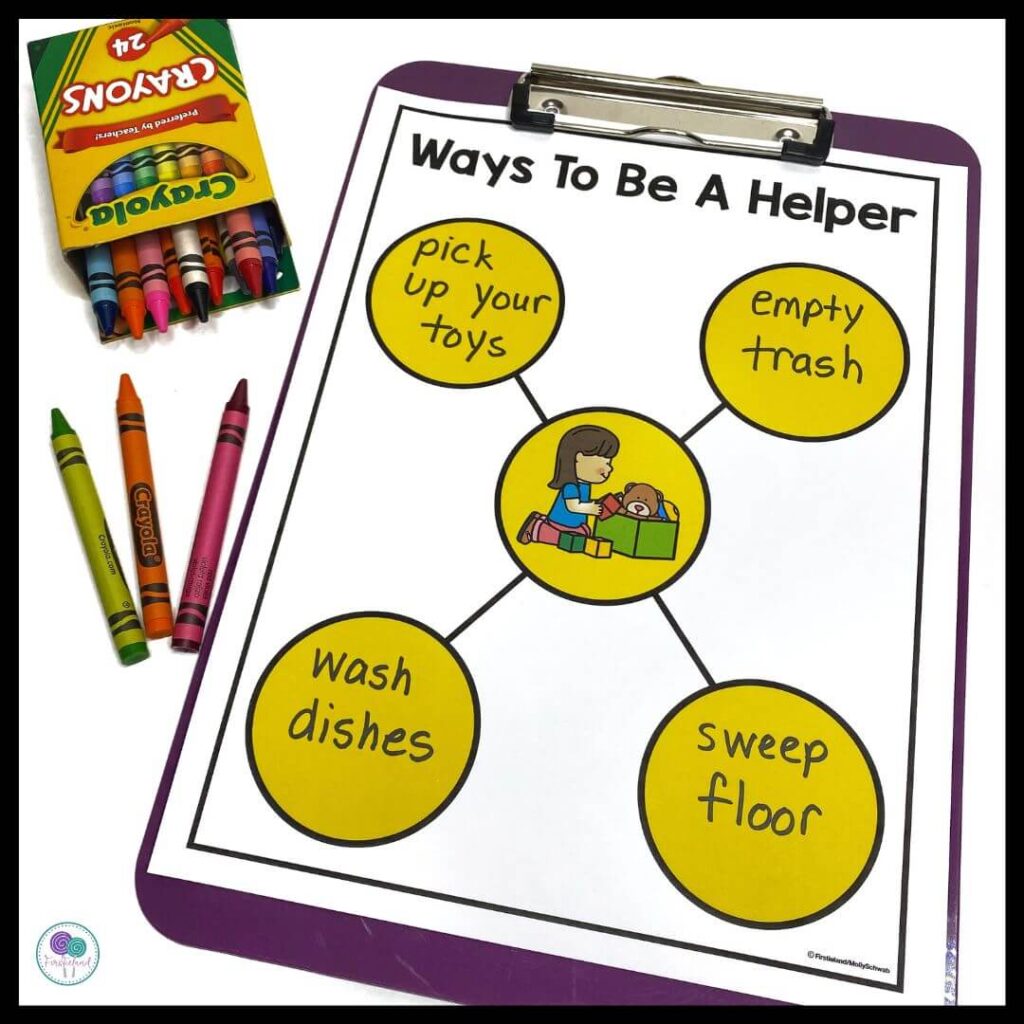

Grateful Greta
The final area to focus on in your students' social-emotional learning is gratitude. Teaching students to be grateful can help to strengthen all areas of their learning. Grateful Greta is our final superhero in the behavior bunch. She teaches the students about being grateful every day.
She shows kids how to notice and be thankful for the little things, like a sunny day or a tasty snack. Greta tells students that being grateful makes their hearts feel happy and helps them see all the wonderful things around them.
To encourage gratitude in our classroom, I read the story The Gratitude Jar by Katrina Liu. It's a great story about a little girl who is always complaining and dissatisfied when she doesn't get her way. It's a great story to reinforce that saying “You get what you get and you don't throw a fit.”.

Next, we create our own gratitude jar for our classroom. We keep a little stack of gratitude cards next to it and make it part of our morning meeting each day to write one thing we are grateful for as a class. We save everything in the jar and then around Thanksgiving, we take out all the cards and read them again. It's a nice way to remember all the great things that are going on in our classroom and remind us to be thankful.
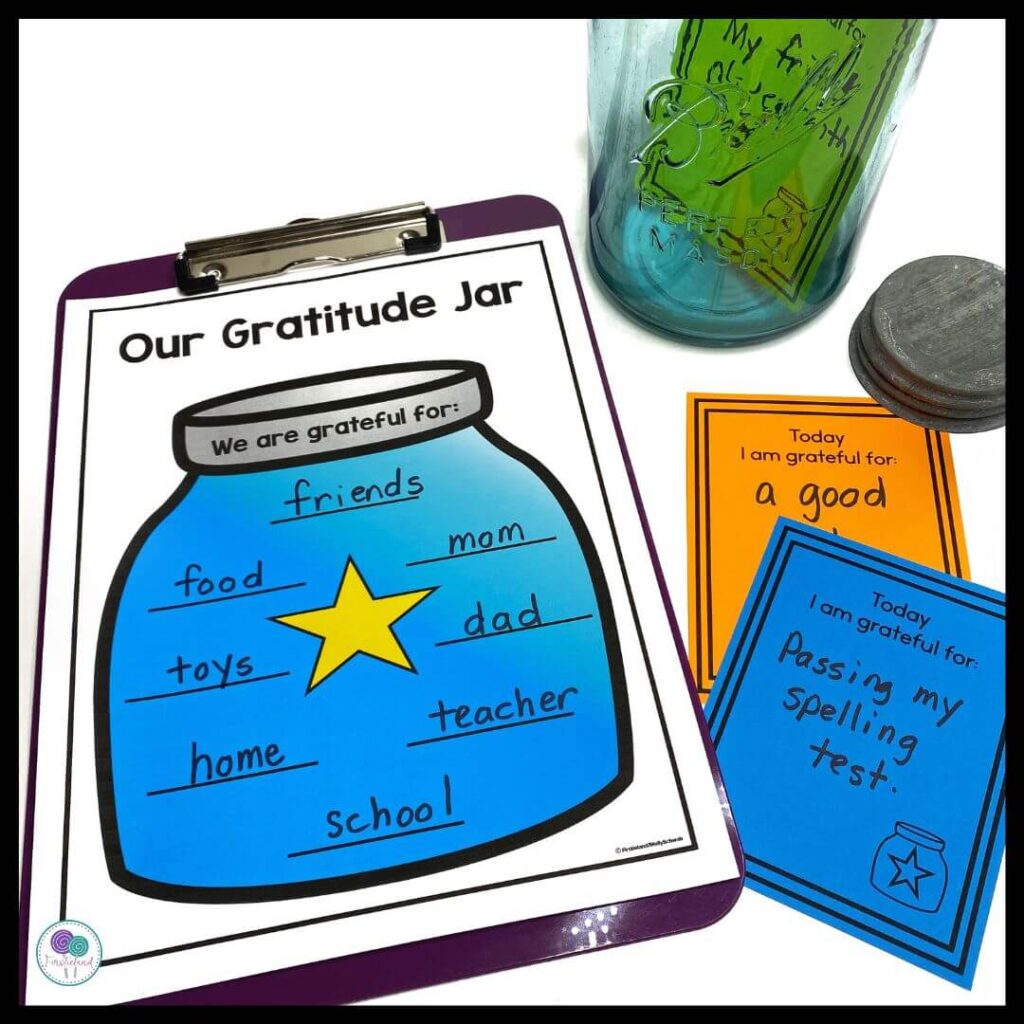
Best SEL Strategies For Younger Students
Social-emotional learning activities don't have to be difficult or boring. The best teachers know that when you make learning fun for young children they're more likely to respond and remember the skills you're teaching. Using simple things like lessons and anchor charts about Captain Kindness and The Behavior Bunch in your classroom can help you reinforce these skills all year long.
As students follow along with your daily lessons they can add a superpower sticker to a special headband. When your sel lessons are complete, students will become an official members of The Behavior Bunch! These superheroes, along with building relationships with your students, can help classroom teachers create effective strategies for the best classroom management all year.
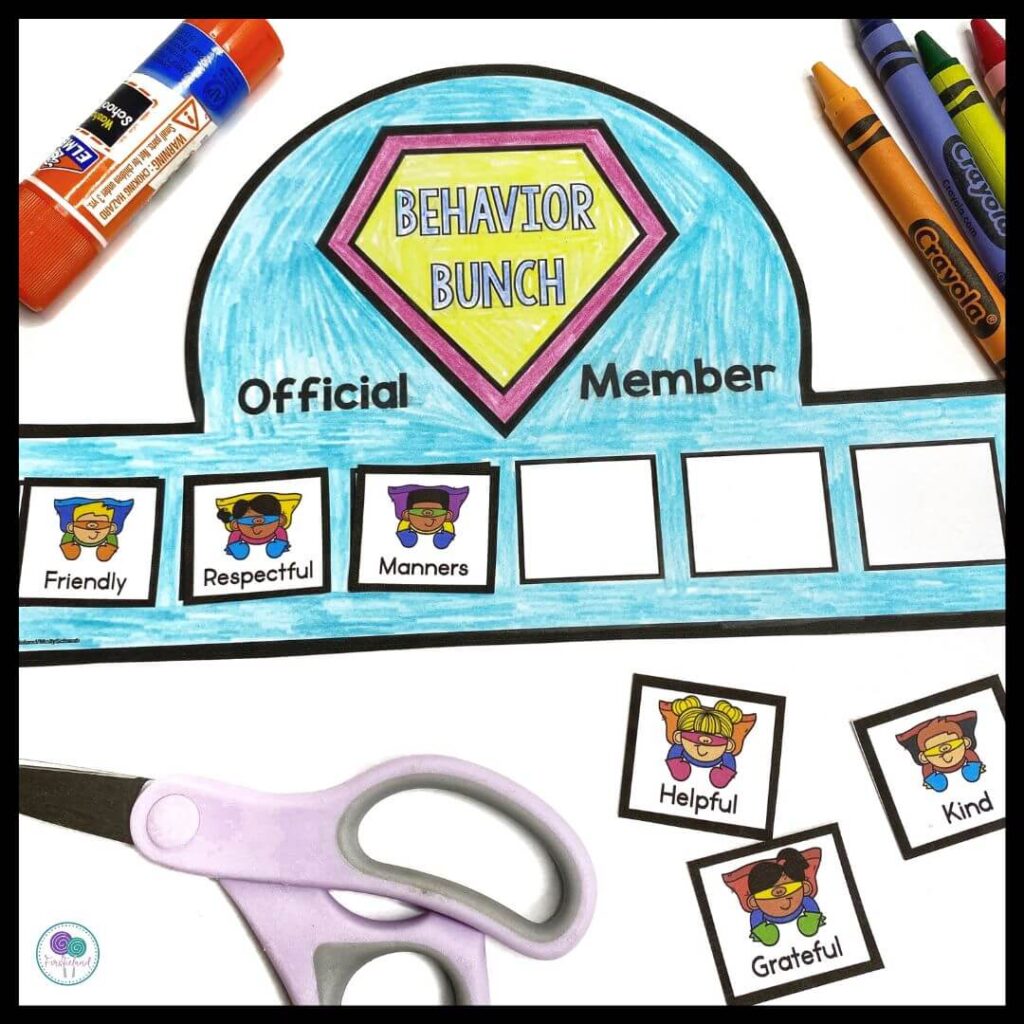
Ready to get started? This unit called Captain Kindness And The Behavior Bunch has everything you need for your social-emotional learning curriculum. Teach your students about kindness, respect, manners, friendship skills, how to be helpful and gratitude in a fun and hands-on way! Click here to take a closer look.
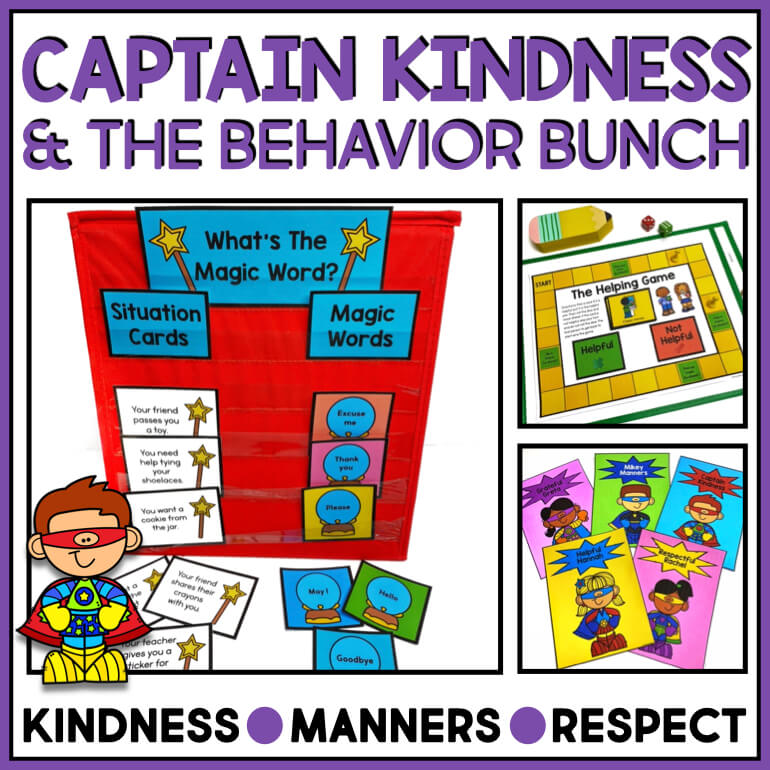
Looking for a game-changing social emotional learning curriculum to help students improve their behavior and social skills? These SEL activities are the ultimate tool to transform your learning environment in just 15 minutes a day!
This year-long curriculum includes engaging, high-interest daily slides that are designed to help students practice and master social skills in quick 15-minute lessons each day. And with a variety of other activities like SEL scenarios, writing, role-playing, and secret missions you can easily differentiate and meet the unique needs of each of your students. Click here to view this curriculum.

Looking for more social-emotional learning activities? Take a look at these posts:

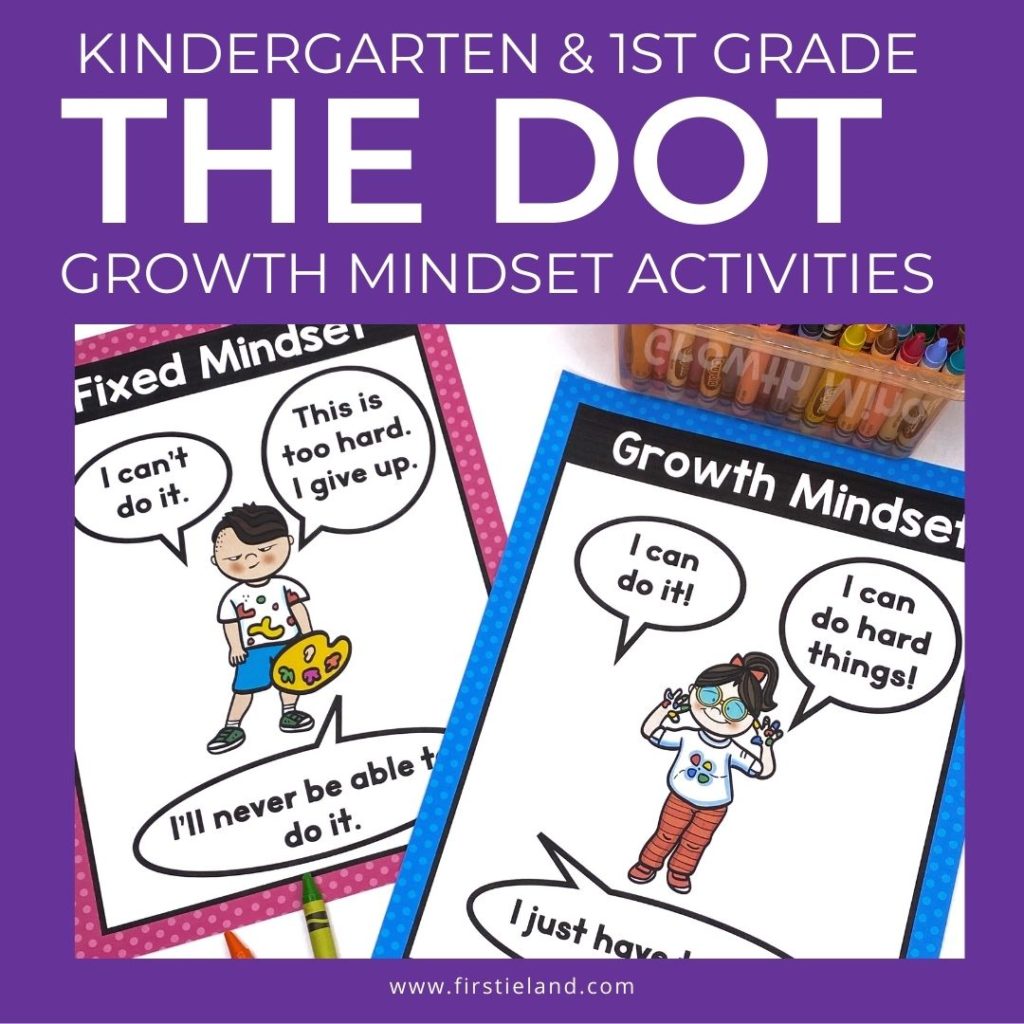
SAVE THESE IDEAS FOR LATER!
Take a minute to save these tips to your favorite elementary classroom Pinterest board so you can remember them later!
